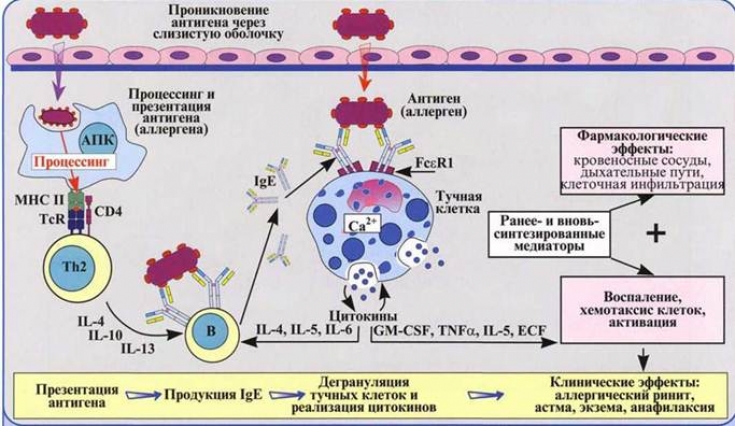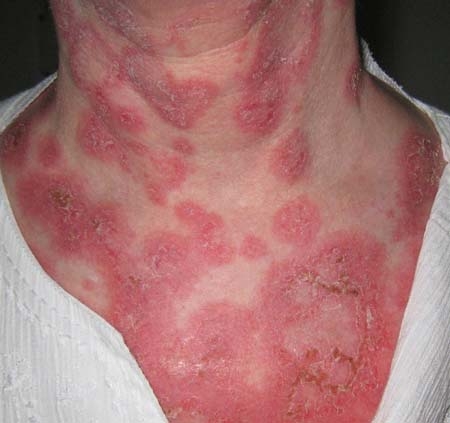Toxicoderma – inflammatory reaction of the skin and mucous membranes to the intake of allergens of various origins.
Substances-allergens enter the body, as a rule, parenterally or inhalation. The most common is drug toxicoderma, which occurs as a reaction to certain groups of drugs. But there are also alimentary, vaccine, professional and autointoxication toxicodermia.
On estet-portal.com read more about the forms of toxicoderma, as well as the mechanisms of development and dangerous complications of the disease.
Clinical manifestations of toxicoderma and its main varieties
Clinically, toxic-allergic dermatitis does not have specific manifestations, since the reaction to the allergen in the patient is individual.
Toxicoderma is characterized by general symptoms: fever, erythema, itching, loss of appetite and loss of strength, which complicates the diagnosis.
Rashes occur both mono- and polymorphic. There are such elements of the rash with toxic-allergic dermatitis:
• spots;
• papules;
• nodes;
• vesicles;
• pustules;
• bulls;
• necrosis.
The rash can also spread to the mucous membranes of the mouth or genitals. After the rash resolves, persistent hyperpigmentation remains.
Read also: The main types of toxicodermia and their manifestations
Immune and non-immune mechanisms of development of toxicoderma
The pathogenesis of toxicoderma is due to the body's reaction to an antigen substance, which leads to toxic damage to blood vessels, tissues and a change in the body's reactivity.
In most cases, sensitization of the body to substances occurs in patients who already have a history of allergies.
Immune responses in this pathology are divided into:
I. Cytotoxic reactions.
II. Immune complex.
III. Immediate reactions.
IV. Delayed reactions.

2. Hereditary enzyme deficiency.
3. Cumulation of drugs in the body.
4. Phototoxic reaction.
All of these reactions can be clinically manifested by urticaria, arthritis, nephritis, vasculitis, generalized edema.
You may also be interested in:
How does an allergic reaction develop? immediate type
Severe and rare forms of toxic-allergic dermatitis
In addition to such complications of toxicoderma as erythroderma, Quincke's edema,
anaphylactic reaction, renal and hepatic insufficiency, there are also very severe forms of the disease.

• allergic vasculitis;
• bromoderma;
• iododerma;
• hyperkeratosis of the palms and soles.
One of the most dangerous manifestations of toxicoderma is Stevens-Johnson syndrome or toxic epidermal necrolysis – this is a complicated bullous form of toxicoderma caused by antibiotics, antiepileptic or sulfanilamide drugs. In patients, the epidermis begins to exfoliate (Nikolsky's symptom), painful erosions appear in the oral cavity, keratoconjunctivitis and rashes in the genital area.
Patients with Stevens-Johnson syndrome are prone to secondary infections and, in advanced cases, sepsis.
With timely treatment, the prognosis for patients with toxicoderma & nbsp; favorable. However, the doctor should always be careful when prescribing drugs that can provoke an allergic reaction.






